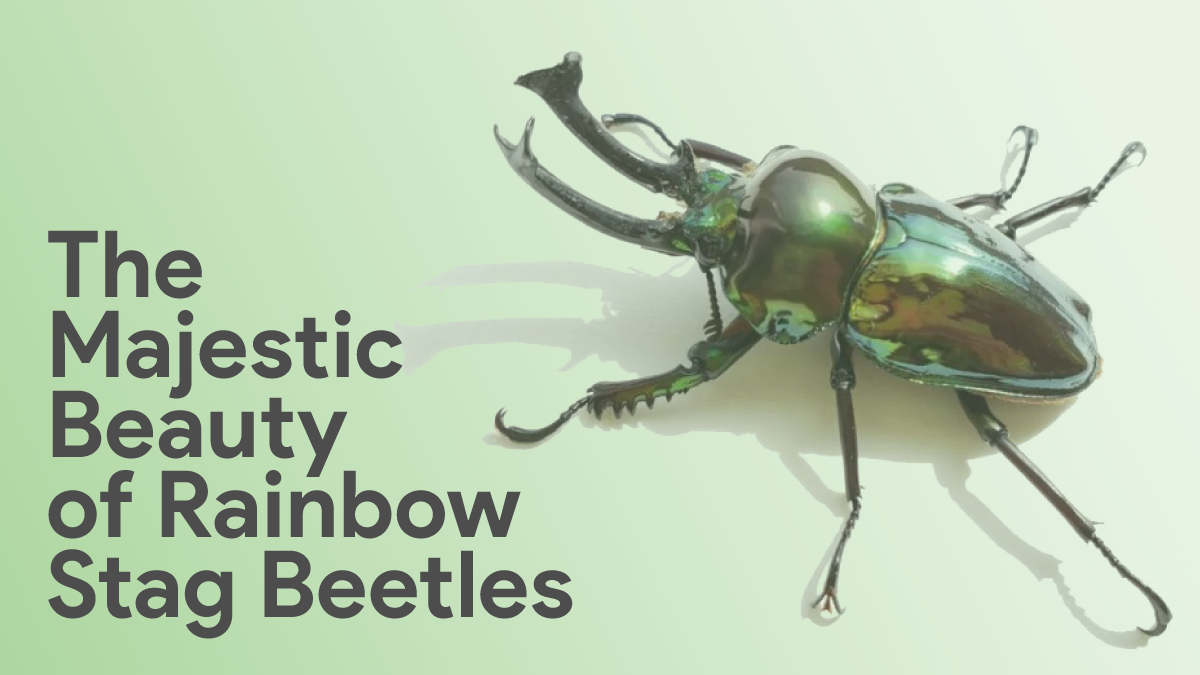Rainbow stag beetles are a good pet for new beekeeping bees since they are shorter in development and have a long lifespan. Here is our learning from keeping rainbow stag beetles in this guide.
Table of Contents
Rainbow stag beetles
Rainbow stag beetles are a beetle species known for their striking appearance, including iridescent colouring, large size, and unique mandibles or horns. The following are some details about different species of rainbow stag beetles:
- Lucanus Cervus: we found this species in temperate forests of Europe, Asia, and North America. We can grow up to 70mm in length. The male Lucanus Cervus beetles have large, antler-like mandibles that they use to battle other males for a mate.
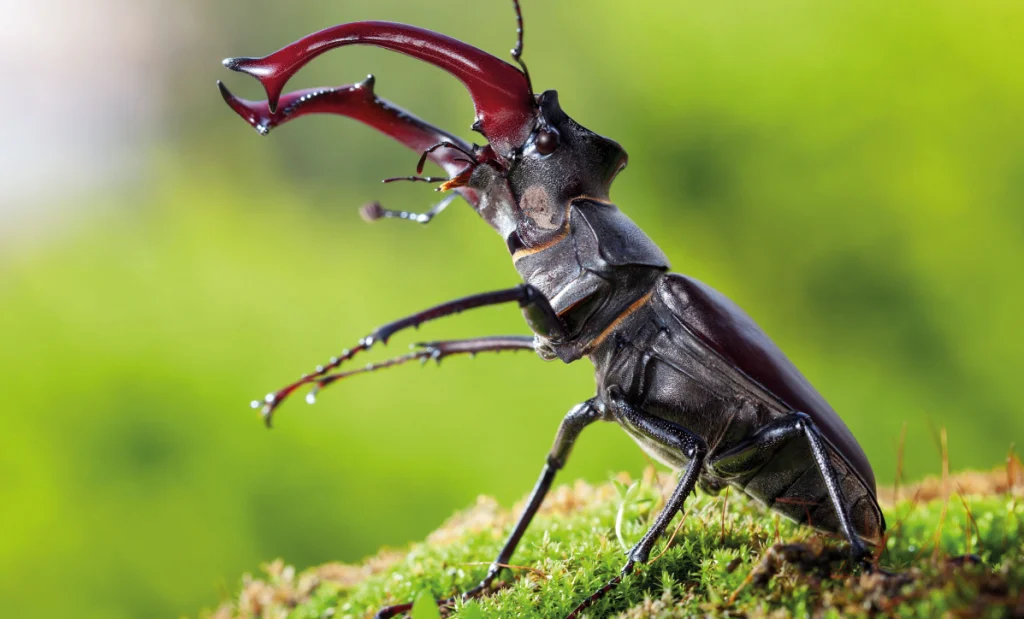
2. Prosopocoilus Inclinatus: The iridescent green, blue, and purple colouring of this Southeast Asia species is evident in its size – up to 35mm long. This remarkable development has made it a popular choice among collectors. We often use it as a decorative species in insect collections.
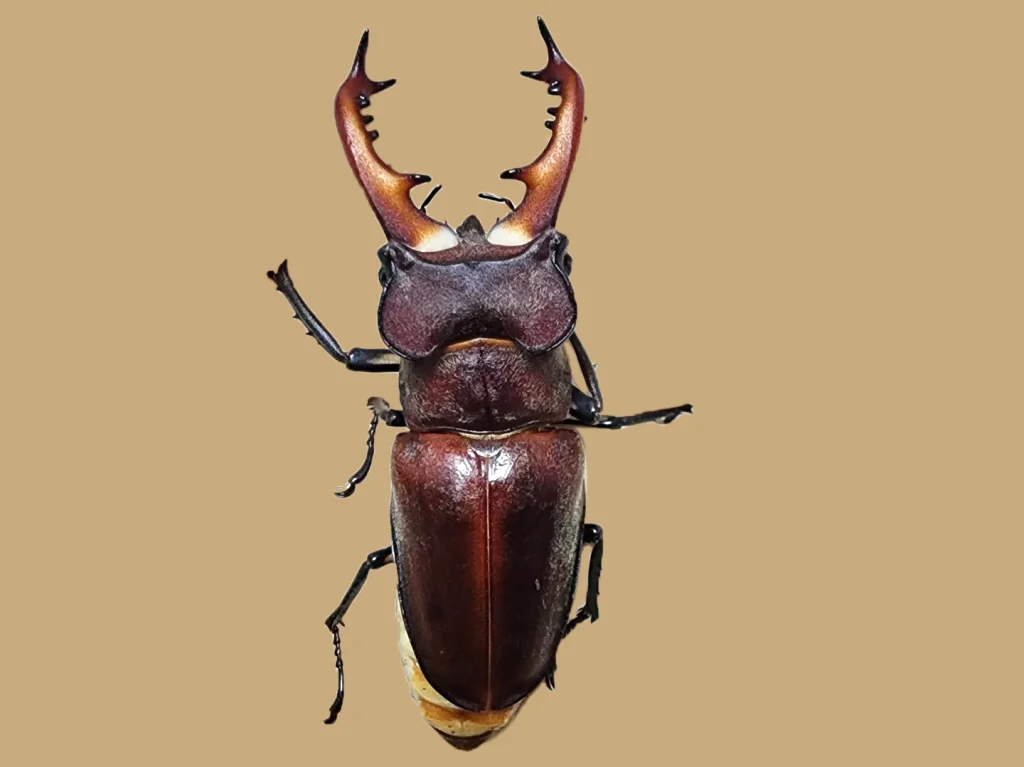
3. Phalacrognathus Muelleri: This species is endemic to Australia and can grow up to 35mm in length. It is metallic blue-green and a popular species for collectors.
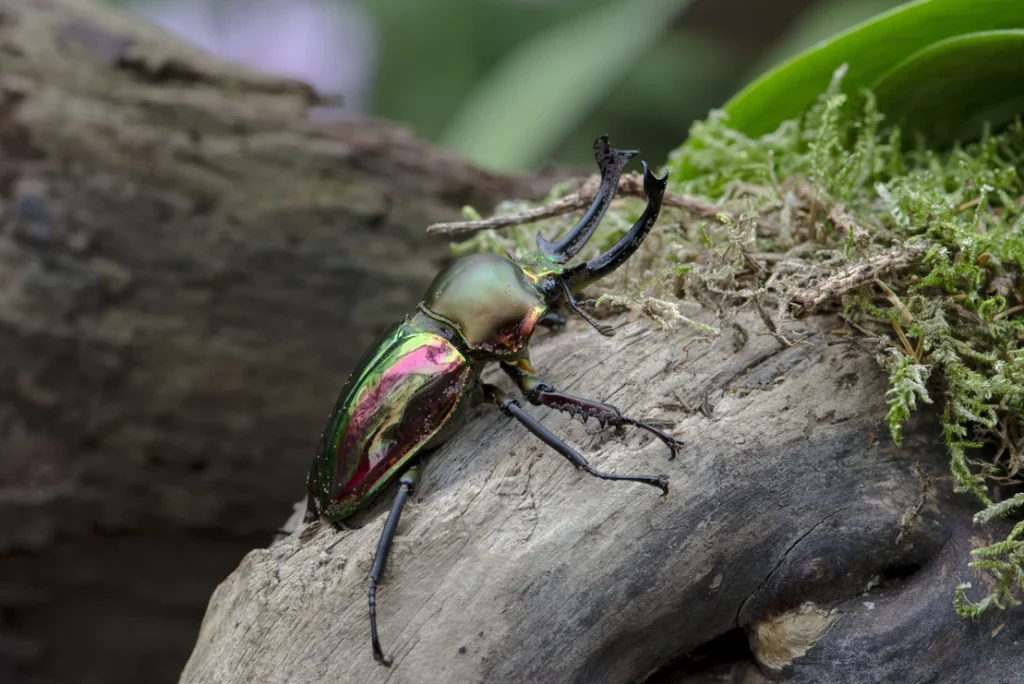
4. Chiasognathus Grantii: This species is native to South American forests and can grow up to 45mm in length. We know it for its metallic green and bronze colouring.
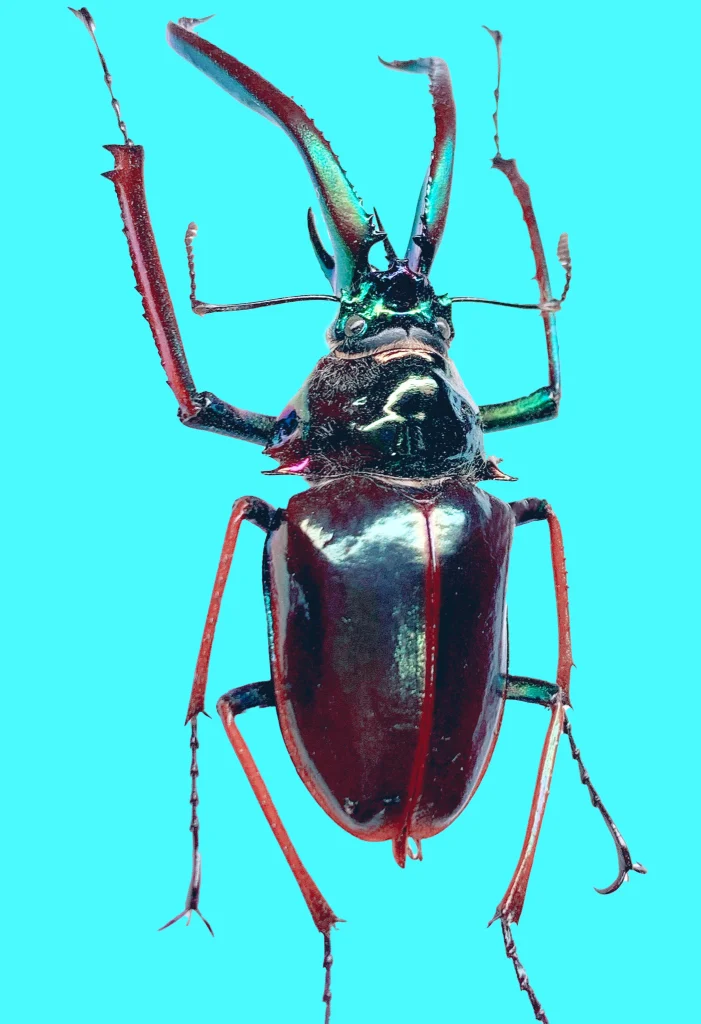
5. Dynastes Hercules: In Central and South America, it is among the largest species of beetles in the world. This species is large and has impressive horns to keep it in insect collections.
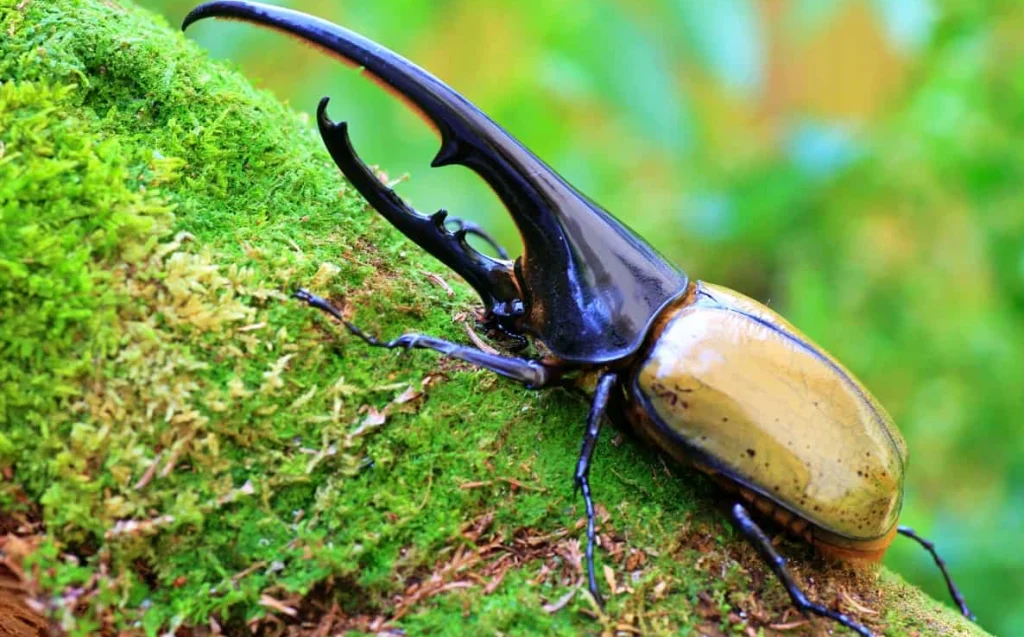
6. Exocentrus Lividus: This species grows up to 70mm in length in South American rainforests and is known for its distinctive green and blue colouring.
7. Cyclommatus Elaphus: Asia’s species can reach up to 70mm in size, making it one of the largest freshwater snails on earth. Its iridescent metallic green and blue hues stand out among its peers!
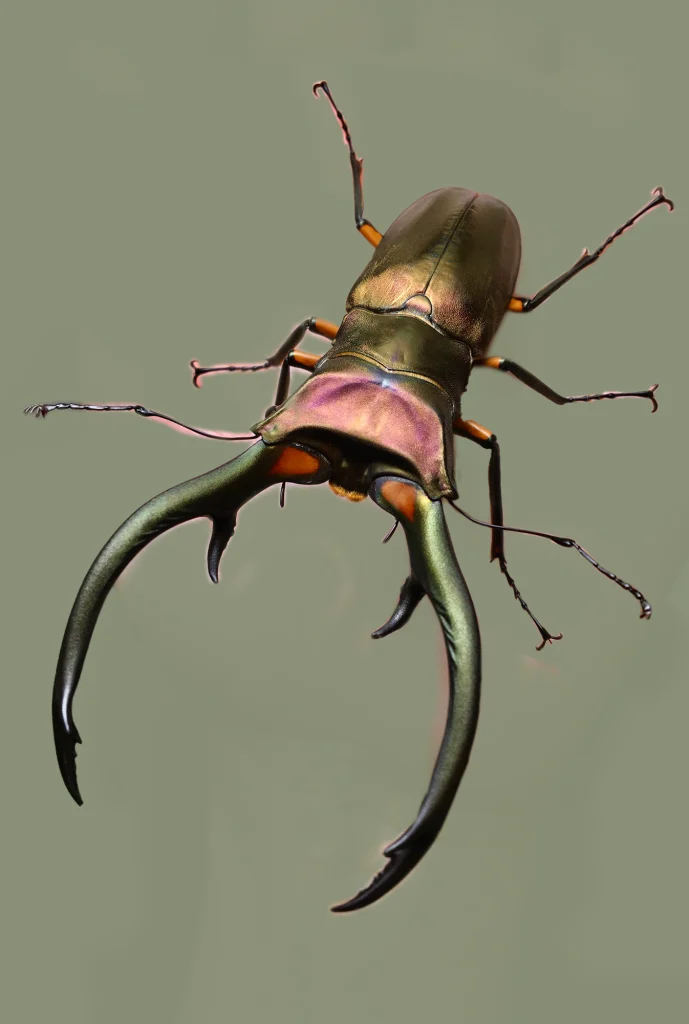
8. Serrastrangalis Francisi: we found this species in South American rainforests, and it can grow up to 40mm in length. Collectors prize it for its iridescent green and blue.
9. Smaragdesthes Africana: Endemic to Africa, this species can grow up to 45mm in size and is known for its metallic green and blue colouring
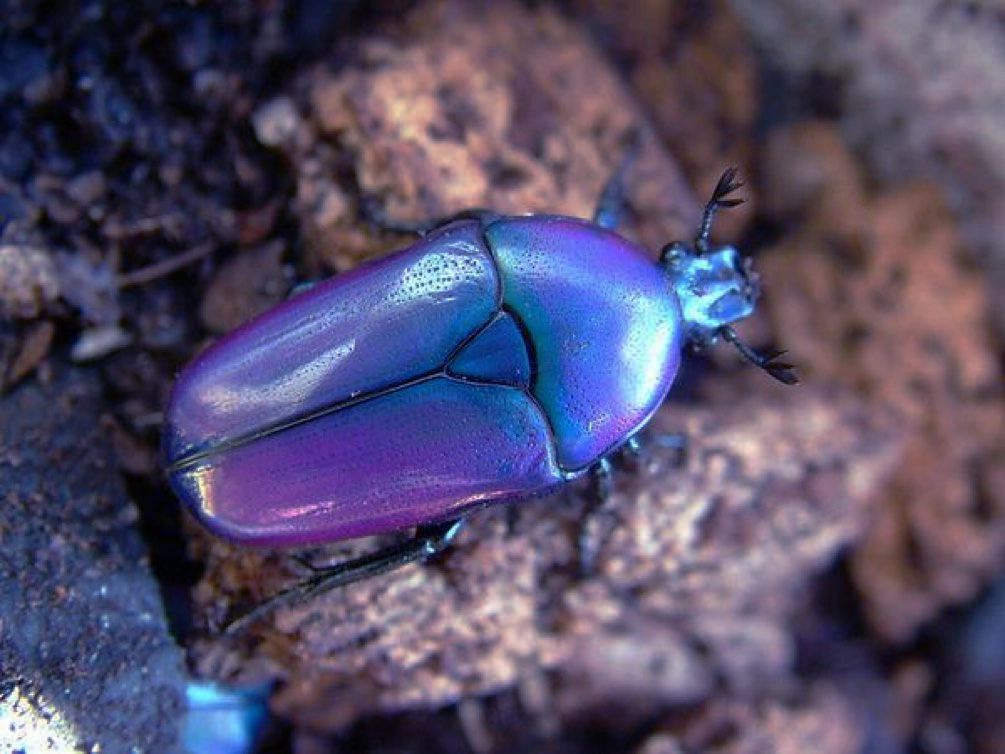
10. Lamprima Adolphinae: This endemic Australian species reaches up to 35mm in length, boasting vivid metallic green and azurite hues. We prize it for its distinctive appearance!
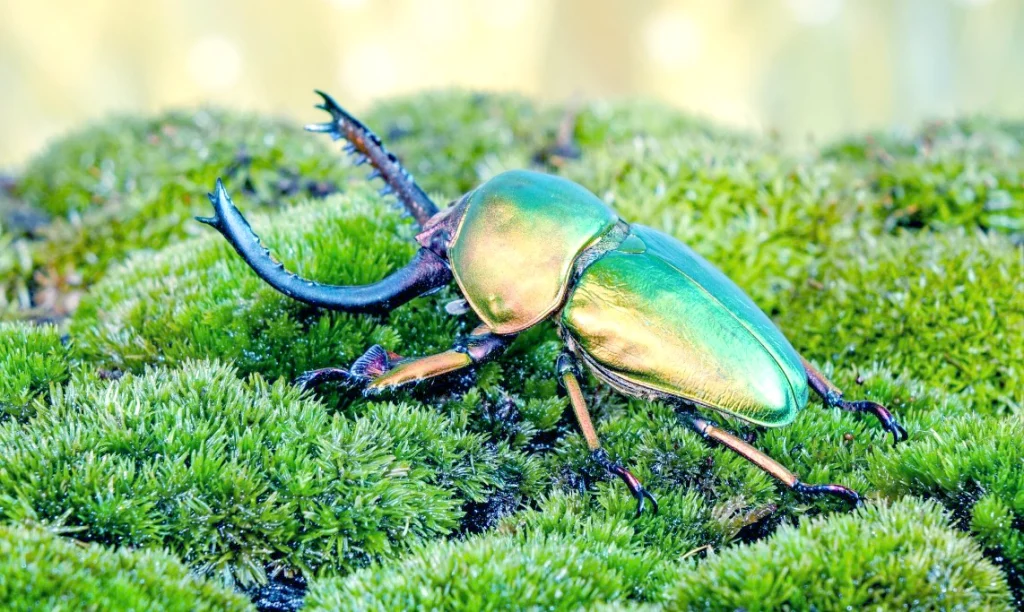
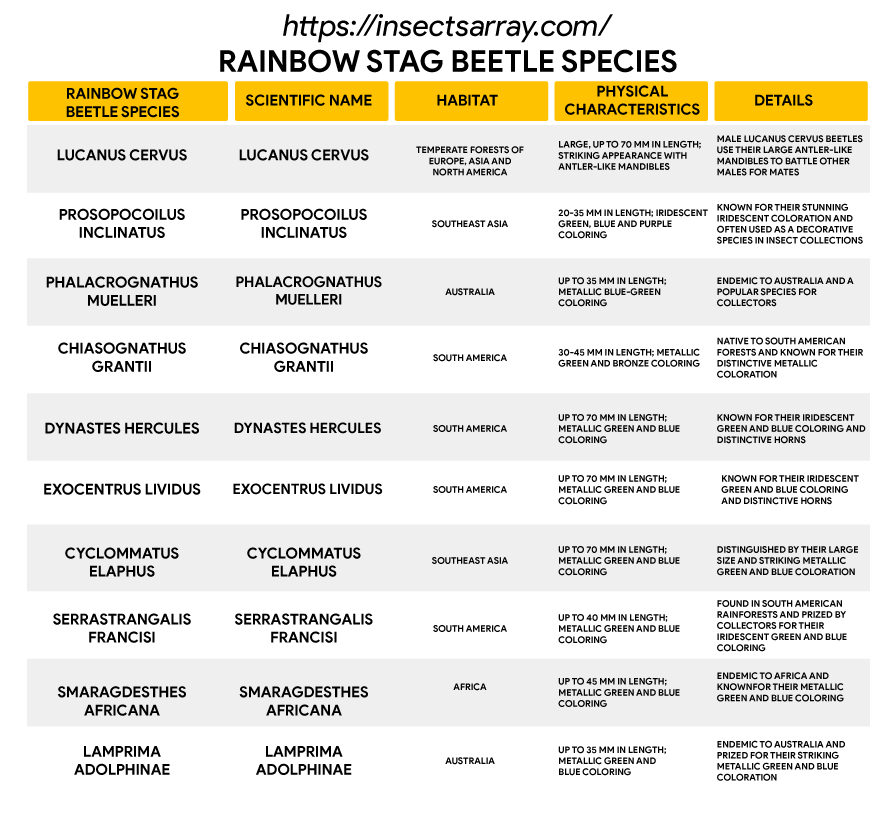
lifecycle of rainbow stag beetles
The lifecycle of rainbow stag beetles involves several stages: egg, larva, pupa, and adult. Here is an overview of the process.
- Egg: Female rainbow stag beetles lay eggs in the soil or rotting wood. The eggs are small and white and hatch into larvae within a few weeks.
- Larva: After hatching, the larvae feed on decaying organic matter in the soil or wood where they were laid. During this stage, they increase and moult several times. Depending on the species and environmental conditions, this stage can last several months to a year.
- Pupa: When the larvae are fully grown, they transform into pupae. During this stage, they undergo metamorphosis and their body changes into an adult beetle.
- Adult: Thein the pupal stage after several weeks to several months in the pupal stage. Adult rainbow stag beetles are sexually mature and mate shortly after emerging. The species and the environment determine their longevity, as long as they live for several months to a year.
Difference between male and female
Rainbow stag beetles exhibit sexual dimorphism, meaning that the males and females have distinct physical differences. Some common differences between male and female rainbow stag beetles include the following:
- Size: Males are often larger than females, although the size difference can vary between species.
- Mandibles or horns: Male rainbow stag beetles often have large, antler-like mandibles or horns, which they use in battles with other males over mates. Females typically have smaller mandibles or no mandibles at all.
- Colouration: Males and females can have different colouring, with males often being more iridescent or metallic in appearance.
- Body shape: Males and females can have different body shapes, with males sometimes being more robust and elongated.
What do rainbow stag beetles eat?
Rainbow stag beetles are generalist feeders and feed on various food sources. As larvae feed on decaying organic matter, such as rotting wood or leaves. As adults, they provide a range of food sources, including:
- Plants: Some species feed on the sap from tree wounds or the foliage of plants.
- Nectar: They feed on nectar from flowers and other sweet substances.
- Fruits: Some species feed on fruits significantly overripe fruits.
- Other insects: In some cases, adult rainbow stag beetles may feed on other insects, such as aphids.
Do rainbow stag beetles fly?
Indeed, adult rainbow stag beetles are capable of flight. They encased their sturdy wings in a resilient exoskeleton that safeguards their delicate appendages during airborne manoeuvres or activities.
The beetles use their wings to fly from place to place in search of food, mates, and suitable habitats.
The ability to fly varies between species, with some species having better flight capabilities than others.
Rainbow stag beetles can fly long distances for sustenance and mates. In contrast, others are pale flyers, relieving more on their legs for locomotion.
How rare are stag beetles?
The rarity of stag beetles varies depending on the species and the region. Some species of stag beetles are standard and abundant in specific habitats, while others are rare or endangered.
The conservation status of many species of stag beetles has yet to be well known, as their populations are challenging to monitor and assess.
Considering environmental conditions, habitat loss, and invasive species introduction, stag beetles can vary as time passes.
Conservation efforts are underway in many regions to protect and conserve stag beetle populations, including habitat restoration.
Are rainbow beetles poisonous?
Rainbow stag beetles are not poisonous. They do not produce harmful chemicals that can cause harm to humans or other animals.
However, some species of stag beetles have sharp mandibles that they use to defend themselves against predators or to compete for mates.
These mandibles can cause a painful bite, especially if the beetle feels threatened or is handled roughly. As a result, taking stag beetles with care and avoiding them is recommended.
Summary
Habitat loss and degradation often threaten stag beetles, as they depend on forests, woodlands, and other natural habitats for survival. Climate change may also affect stag beetle populations by altering the timing of migration and reproduction and affecting food sources.
Related Articles
What is Ground Beetle? Everything You Need to Know.
What Is A Titan Beetle?: What Makes Them Unique
What is a Carrion Beetle? All About the Fascinating Creature
